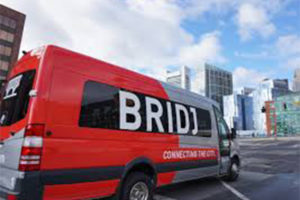Progressive Voice is a weekly opinion column. The views and opinions expressed in this column are those of the individual author and do not necessarily reflect the views of their organization or ARLnow.com.
Arlington has long been known for mastering smart infrastructure investments that have boosted the local economy, made Arlington an attractive place to live, and led to high levels of satisfaction in surveys of County residents.
Now, County leaders face a public that is cool to ambitious approaches to transportation, planning and infrastructure other than, perhaps, new and expanded schools.
For many, Arlington’s 2014 decision to cancel streetcars in Crystal City and Columbia Pike dealt not only a blow to transportation, but to community pride as well. What if, however, this gives us a timely, useful pause to consider improvements that are less capital-intensive? While I do not believe they can be the only solutions, it is important that we explore such alternatives.
Several fast-changing trends are converging to change how we live, work, shop, play – and get around. This is happening all over the world, but has special relevance for Arlington as we expand a planning focus from Metro station areas to other ways of delivering services, opportunity and quality of life.
These trends – technology, demographics, and shifts in work and workplaces – require new types of planning.
For transportation, Uber and Lyft are mainly known for disrupting the taxi industry, but it is really the smart phone platform that is transforming everything from biking to parking to travel.
So what are the opportunities in Arlington and what does it mean for planning?
Ride and Van Share – New companies like Bridj and Split are building new “microtransit” services that range from $2-$7 per trip. They fit a service level somewhere between solo driving and ART bus lines. They work by using algorithms to assign passenger pick-ups based on the most efficient origin-destination routes among several shuttle buses.
For example, residents living near the intersection of Columbia Pike and George Mason Drive can hail shuttles going to Seven Corners, Ashburn and other job centers not served by Metro (or that require multiple transit connections). These new transit companies are eager to work with localities to share data, incorporate services into formal transportation planning, and optimize public transit routes.
Paratransit – Arlington Transit offers on-demand rides for travelers with limited mobility. While costs have decreased (28% over the past three years to $27 per trip), these new services could reduce the costs of transportation further. As Arlington develops aging-in-place strategies throughout the County, these rides are incredibly important.
Car Owners – Yes, we have the Car-Free Diet, but what about support for drivers? Let’s face it, many Arlingtonians live in areas where a car is really the only practical travel option. However, many drivers want to reduce the hassles of driving, finding a parking space and car ownership. Fortunately, there are apps for all of these. The availability of these resources means that we should expand our transit programs to find ways to use our roads and parking resources in ways that help drivers — since reduced driving through efficiencies and easier route and parking navigation can result in less congestion for us all.
Locally Grown Transportation Companies – Arlington and DC are home to transportation companies like TransitScreen. Mobility Lab tracks new trends at the intersection of transportation, cities and technology. Arlington’s Economic Development chief Victor Hoskins wants to focus on tech for security, health and education. Given Arlington’s leadership in land use and transportation, and with the addition of 1776 to Crystal City, it makes sense to add smart cities to the list.
But there are also questions. How do public agencies incorporate private companies into transportation and infrastructure programs? For land use, what is Transit Oriented Development (TOD) when the transit comes to you through more individualized services? How do people without smart phones access broader mobility services? And finally, how will self-driving cars and transit ultimately disrupt the current disruptors?
Certainly tech-enabled ride sharing apps won’t exactly replicate the performance of a streetcar line. But they can provide immediate, cost-effective mobility options and supply the data needed to support the right kind of larger transportation and other infrastructure investments in the future.
In times such as these, the winning bet may not always be the big bet, but a series of strategic, iterative bets can help continue moving us forward.
Lisa Nisenson is a long-time civic advocate in Arlington and is founder of GreaterPlaces, a startup and member of the tech incubator 1776.



